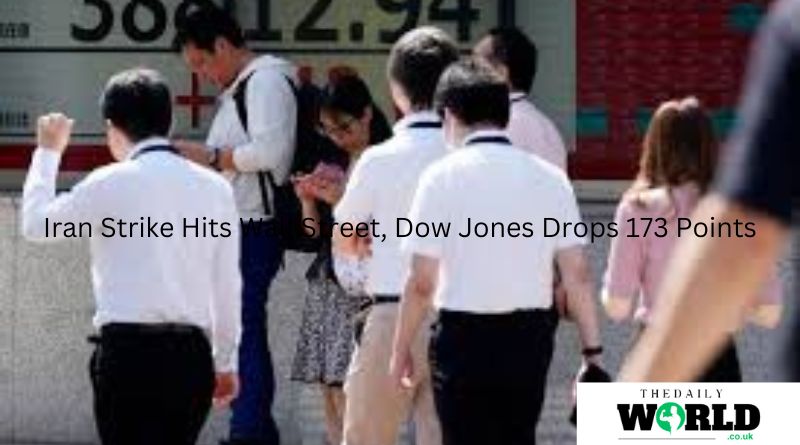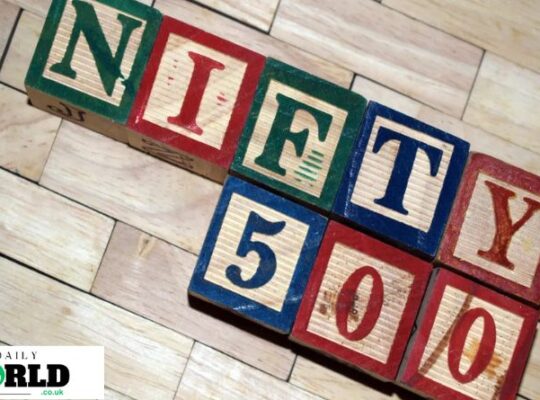The recent strike in Iran has sent shockwaves through global markets, leading to a significant downturn in U.S. stocks. On the morning of the strike, the Dow Jones Industrial Average, one of the most critical indicators of the U.S. stock market’s health, plummeted by 173 points. This drop wasn’t just a single market response but part of a broader chain reaction that impacted global markets. Investors worldwide rushed to adjust their portfolios, anticipating further instability. This article will explore the reasons behind the market drop, its global implications, and what lies ahead for investors in these turbulent times.
The Catalyst: Iran’s Military Strike
Iran’s military strike came as a significant escalation in the ongoing tensions between the country and its Western counterparts, particularly the United States. For years, Iran has been at odds with many Western nations over its nuclear ambitions, regional influence, and geopolitical strategies. However, this particular strike, possibly a reaction to increasing sanctions or military threats, took the global financial markets by surprise.
Market analysts point out that investors are always jittery when geopolitical tensions rise, especially in the Middle East. The region holds a significant portion of the world’s oil reserves, and any conflict there can quickly disrupt global energy supplies. With oil being a major driver of various industries, instability in Iran can send ripples through economies worldwide.
The Immediate Impact on Wall Street
The Dow Jones dropped 173 points following the news of the strike, highlighting how sensitive the U.S. stock market is to global events, particularly those that involve major oil-producing nations like Iran. This sharp decline wasn’t confined to the Dow; other major indices, including the S&P 500 and the Nasdaq, also experienced drops, albeit to a lesser extent.
Financial markets tend to react sharply to unexpected events, especially those that involve potential disruptions to vital resources such as oil. The fear of supply chain interruptions often causes energy stocks to soar, while other sectors suffer. In this case, defense stocks saw an uptick, while industries reliant on stable energy prices, such as airlines and manufacturing, experienced declines.
Energy Prices Spike
As expected, the price of crude oil surged in the immediate aftermath of the strike. Brent crude, the global oil benchmark, saw its price increase by nearly 5% within hours. The reasoning is simple: any instability in the Middle East, especially involving a key oil producer like Iran, sends shivers through the oil markets. Even a temporary disruption in the supply chain can drive prices up.
Higher oil prices lead to increased costs across multiple industries. Transportation and manufacturing, which rely heavily on fuel, often see their profit margins shrink. In turn, this impacts stock prices in these sectors, contributing to the overall decline in the stock market. Consumers also feel the pinch, with rising gas prices making it more expensive to fuel their cars, heat their homes, and even purchase goods transported by road.
Investor Sentiment and Market Volatility
When geopolitical tensions escalate, investor sentiment quickly turns cautious. Wall Street is highly susceptible to fluctuations in investor confidence, and in times of uncertainty, many traders opt for safer investments. This is evident in the movement toward assets like gold, often seen as a “safe haven” during turbulent times. Following the Iran strike, gold prices surged, underscoring the flight of investors from riskier stocks to more secure commodities.
Market volatility is also heightened in such scenarios. The volatility index (VIX), commonly known as Wall Street’s “fear gauge,” spiked following the Iran strike. High volatility usually indicates nervousness among investors, as rapid price fluctuations make it harder to predict market movements. While some seasoned traders can profit from these swings, most investors tend to retreat, waiting for stability to return before making new moves.
Global Economic Implications
While Wall Street experienced a sharp drop, the ramifications of the Iran strike were felt globally. European and Asian markets also saw declines, although not as steep as in the U.S. Major indices in London, Frankfurt, and Tokyo all dipped as investors reacted to the potential for a broader geopolitical conflict and its economic consequences.
Emerging markets, particularly those heavily reliant on oil imports, are particularly vulnerable during times of Middle Eastern unrest. Countries like India and China, which import large amounts of oil from the region, could face higher energy costs, leading to inflationary pressures on their economies. Central banks in these countries may be forced to raise interest rates to combat rising inflation, further slowing economic growth.
What Comes Next for Wall Street?
The immediate future of Wall Street depends largely on how the situation with Iran develops. If tensions escalate further, we could see continued volatility in the markets. Prolonged instability in the Middle East could lead to more significant disruptions in global oil supplies, pushing energy prices even higher and further dampening investor sentiment.
However, if the situation de-escalates, markets could stabilize. Investors tend to have short memories when it comes to geopolitical risks, and if the U.S. government can reassure Wall Street that the conflict will not deepen, we could see a quick recovery. History shows that markets often bounce back from geopolitical shocks, provided the event doesn’t spiral into a broader conflict.
The Role of Central Banks
Another crucial factor will be the response from central banks, particularly the U.S. Federal Reserve. In times of geopolitical uncertainty, central banks often step in to provide liquidity and calm the markets. The Fed could opt to delay interest rate hikes, or even cut rates, in response to increased volatility. Such actions can provide a temporary boost to stock markets by making borrowing cheaper for businesses and encouraging investment.
Moreover, central banks around the world, including in Europe and Asia, may also take steps to mitigate the economic fallout from higher oil prices. However, these actions can only go so far in addressing the root cause of market instability, which in this case is geopolitical.
How Investors Can Protect Themselves
For individual investors, periods of geopolitical tension can be nerve-wracking, but they can also present opportunities. Diversifying one’s portfolio, moving into safer assets like bonds or gold, or even holding more cash, can help mitigate risks. Investors with a long-term view may choose to ride out the storm, betting that the market will recover once the crisis abates.
Those looking for short-term gains might focus on sectors that typically perform well during geopolitical conflicts, such as defense or energy stocks. However, this strategy carries significant risks, as these stocks can be highly volatile and may not perform well in the long run if the situation stabilizes quickly.
Conclusion
The Iran strike that rattled Wall Street is a stark reminder of how interconnected global markets are and how sensitive they can be to geopolitical risks. The 173-point drop in the Dow Jones is a direct result of investor fears over the potential for increased instability in the Middle East, particularly regarding global oil supplies. While the situation remains fluid, investors should brace for continued volatility in the short term, with potential for recovery if tensions ease. Central banks may also play a role in stabilizing markets, but in the end, much will depend on how the geopolitical landscape evolves in the coming weeks.
Read also: check













